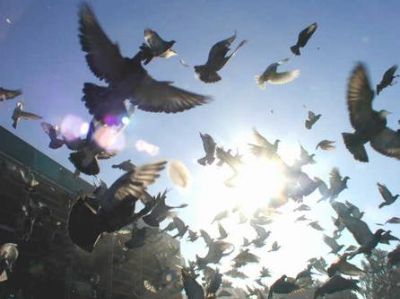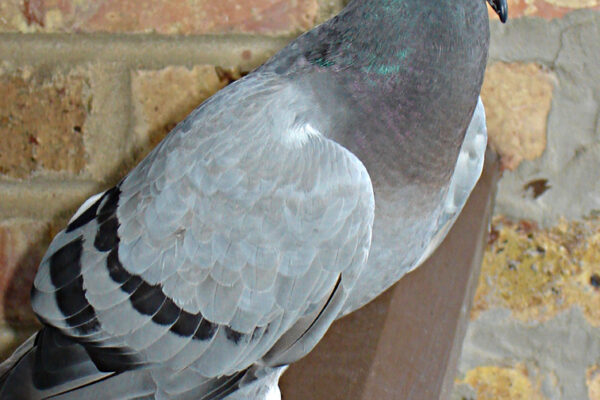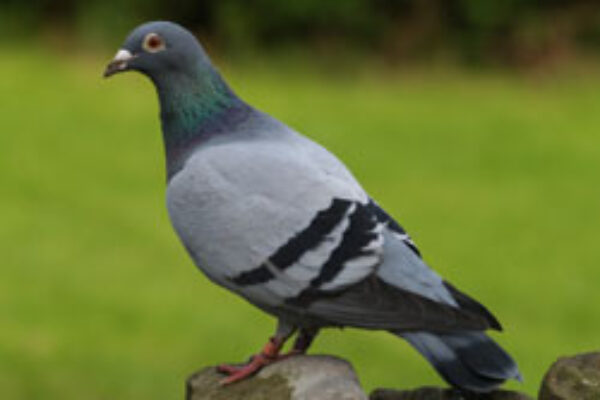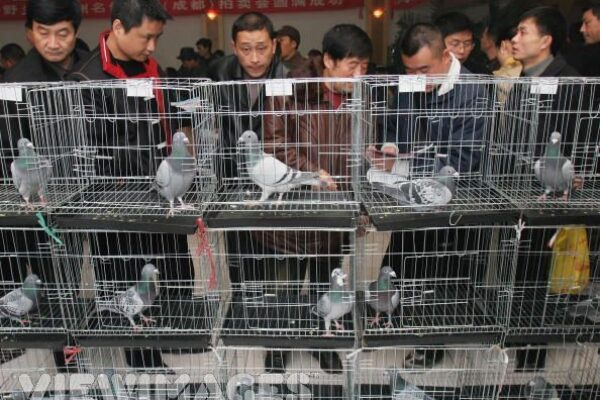Pigeon Racing and Nutrition of the Muscle Part 2
 Another important fact to realize is that, in birds, there are two basic types of muscle, based on the color and function of these muscles. The first of these is white muscle such as that seen best in the pale breast muscles of the domestic chicken. The second is red muscle as seen most prominently in the dark breast muscles of birds such as pigeons, ducks and geese, among other flying birds, for example.
Another important fact to realize is that, in birds, there are two basic types of muscle, based on the color and function of these muscles. The first of these is white muscle such as that seen best in the pale breast muscles of the domestic chicken. The second is red muscle as seen most prominently in the dark breast muscles of birds such as pigeons, ducks and geese, among other flying birds, for example.
Although the muscles of birds contain mixtures of red and white muscle, it is obvious from the examples cited, that the breast muscles of domestic chickens contain a preponderance of white muscle, whereas those of racing pigeons have a preponderance of red muscle. We will try to explain the difference as follows: If we take a small piece o the major pectoral muscle, which lies immediately under the skin of the breast, cut it longitudinally, ie., with the “grain”, process it to produce a thin section stained with special dyes, and examine it microscopically, we see that it is composed of many long, cigar shaped units that are actually specialized body cells called fibers. If we cut the same piece of muscle in cross section and look end on at the cigar shaped units, we see that they are more or less round, oval or even somewhat angular, and that they occur in bundles. (As an example, we would have roughly the same situation if we took a number of pencils to form a bundle, wrapped each bundle with an elastic band and then stacked the bundles on top of one another, as well as end to end.)
Obviously, hundreds of thousands of bundles, both stacked and laid end to end, make up the entire muscle we can feel with our fingers. Continuing our end on view of the muscle fibers, we not firstly that the vast majority of individual fibers in a bundle have a narrow diameter. Based on this finding and several other important and related characteristics which we will discuss more fully, these narrow diameter fibers have been designated as red fibers and in fact make up about 94% of the fibers in the breast muscles. Whereas a majority of fibers are of small diameter, there are many fewer fibers in a bundle that have a much larger diameter and are called whit fibers. These fibers make up only about 6% of the fibers in the breast muscles. We also note that, for the most part, these white fibers are located on the edge of each bundle. Once again, if we use the analogy of pencils, but had mixed thick and thin pencils in a bundle, we would see that, in general, most of the thick pencils representing white fibers would be near or actually touching the rubber band, whereas, most of the slim pencils representing red fibers would be located more deeply inside the bundle. Thus, the predominance of red fibers in the breast muscles of the racing pigeon gives that muscle a red appearance on gross inspection. This red color is related to the presence of myoglobin, a pigmented, oxygen carrying compound peculiar to red muscle in many species of birds and animals. By contrast, the predominance of white fibers in the breast muscle of the domestic chicken imparts a very pale and characteristic appearance to that muscle, because white muscle has very little myoglobin. These basic features serve to outline one of the major differences between a bird such as the racing pigeon, or any migratory species which is required to fly for many hours at a stretch, and a sedentary, non flying bird such as the chicken. There are other differences and we will explore them in more depth as we proceed.
In addition to differences in the diameter of these two types of fibers, what other distinguishing and significant features are there? Well, major investigations have shown that, in addition to having a narrow diameter, individual red fibers have an extensive network of blood vessels running and inter connecting over their surfaces. Red fibers also have a high capacity to take up oxygen, because of the presence of myoglobin, for the metabolism (or burning ) of fuel to produce the energy necessary for flight. Of very great importance of the racing pigeon is the fact that these red muscle fibers function (or as we say, they twitch) slowly.
Because these fibers twitch slowly during flight, they also tire out very slowly. It becomes obvious then that red fibers are those that can handle the sustained effort of rapid flight over many miles, whether the distance is a short training toss, a middle distance race or a major long distance event. In some special situations such as launching into the air, to be discussed later, evidence suggests that the red fibers are also capable of very rapid activity. However, their most important single function seems to be associated with the prolonged, sustained muscular effort of distance flying.
- Pigeon Racing and Nutrition of the Muscle Part 1
- Pigeon Racing and Nutrition of the Muscle Part 2
- Pigeon Racing and Nutrition of the Muscle Part 3
- Pigeon Racing and Nutrition of the Muscle Part 4
- Pigeon Racing and Nutrition of the Muscle Part 5
- Pigeon Racing and Nutrition of the Muscle Part 6
Pigeon Racing and Nutrition of the Muscle Part 2 By: Gordon A. Chalmers DVM
The Leading Online Pigeon Racing and Racing Pigeons Magazine – The Pigeon Insider








